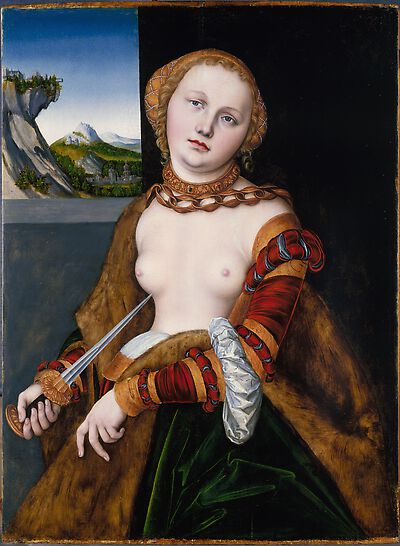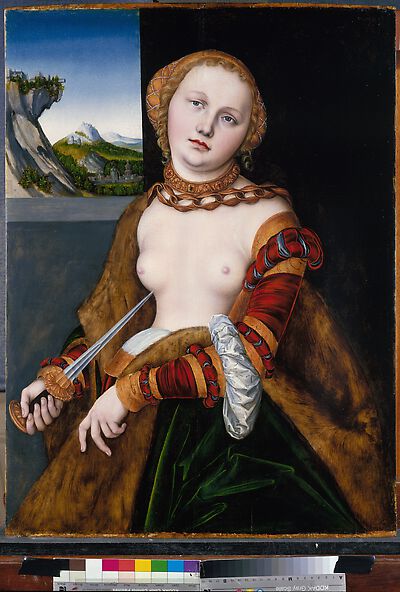The painting depicts Lucretia as a standing three-quarter length figure in contemporary dress with a view of a landscape in the background.
Her face is inclined slightly to the right and she stares into the far distance. In her right hand she holds a long dagger pointed towards her breast
The painting depicts Lucretia as a standing three-quarter length figure in contemporary dress with a view of a landscape in the background.
Her face is inclined slightly to the right and she stares into the far distance. In her right hand she holds a long dagger pointed towards her breast and in her left hand she elegantly holds her overcoat. This is green and trimmed with fur and is draped over her right shoulder. Under the overcoat she wears a precious gold and red robe with stepped sleeves and a white undergarment with puffed sleeves, which is open to reveal her chest. To complement the robe Lucretia wears precious jewellery: a choker and a neckband decorated with pearls. In addition her blond curls are pinned up beneath a pearl bonnet.
The background is dark, but a window on the left indicates that Lucretia is standing in a room. A view of a mountainous landscape with a town and numerous castles is visible through the window.
According to the legend Lucretia lived in the 6th century BC and was the beautiful and virtuous wife of the roman Collatinus. The roman King's son - Sextus Tarquinius fell in love with her. During a stay in her house Sextus threatened to kill her and shame her honour if she did not surrender to him. After the rape Lucretia had her father and husband vow vengeance and then she stabbed herself. The event led to an uprising in which the royal family was overthrown and the Roman Empire became a Republic.
Depictions of Lucretia who was seen as the epitomy of female virtue, chastity, fidelity and honour enjoyed great popularity, particularly in the 16th century.
[Literature: Bierende 2002, Follak 2002, Livius 1909]

